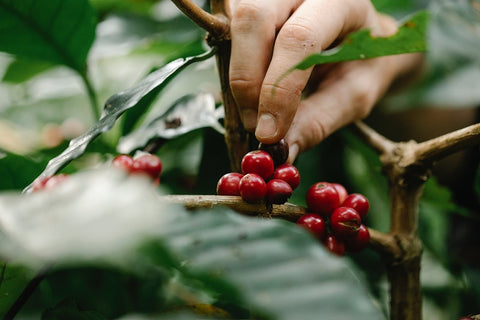Why Is Micro Lot Better For Specialty Coffee?

If you’re a specialty coffee enthusiast, you’ve probably heard of the term “micro-lot”, and your notion of it may be that it is a small plot where exceptional coffee is grown. There is some truth to that, but one needs to have a better understanding of its details to finally figure it out.
Micro-lot coffee is a rather vague concept, just like many terms in the coffee industry are. People have different definitions of it, mainly depending on who you are talking to. A problem is apt to arise from this, because without a single and precise meaning all through the coffee supply chain, micro-lot, as a term, loses its essence.
In general, however, coffee grown in a micro-lot is that which can be traced to a specific region, and it is a very particular one that each bean of its produce flourished in the same soil, climate and altitude, as well as its processing.
Micro-Lot Coffee Defined
There are commonly two ways of defining micro-lot coffee. One is that it is produce which is grown on a small piece of land of a single farm, and two, is that it is coffee that has been processed through a certain washing station on a single day. Critical factors pertinent to this coffee production method lead to coffee which is pure and traceable.Primarily, it preserves the distinct flavour and characteristics of an individual region.
In contrast to micro-lot coffee are blends, and these are coffees obtained from various regions, countries, and even continents.
In the aspect of marketers, micro-lot coffee refers to coffee that is of exceptional quality. A certain quality may not be defined in this regard, but that is basically true. More time and expense on the side of the farmer is entailed in growing and processing coffee in one plot, and their aim is to grow high-quality coffee that can be sold for higher prices.
With the third wave of coffee emerging, micro-lot coffee has been rising in popularity. Consumers of specialty coffee are keen on knowing where their drink is sourced, referring to what region it was grown, what conditions it has experienced and its processing method because these factors determine its unique taste and qualities.
Single-origin coffee is defined in many ways nowadays. Brazil, as a country, grows 30% of the world’s coffees, and a single-origin Brazilian coffee may as well be known as a blend. Particular states in Brazil in fact produce more coffee than anywhere in the world.
Easier Traceability Of Microlots
Micro-lot coffees are easier to track pertaining to their economic, social and environmental sustainability- factors which meticulous consumers are keen on. Growers find an advantage in identifying and producing higher quality coffee by selling them at higher prices.
In the same way, buyers and producers can also forge long-term relationships by cultivating micro-lots. It is because of this small scale setup, growers can easily access feedback from the buyers.
On the side of the buyer or the roaster, a micro-lot coffee presents an opportunity to offer something distinct to their customers, and they are willing to pay an added price for it. Suffice it to say that “micro-lot” holds the prestige of what was formerly known to be “fair-trade”, or “organic”, terms that are no longer preferred since the last decade.
What Is Third Wave Coffee?
The third wave coffee has pervaded and is here to stay. What does this movement mean? By the third wave, it’s all about learning how to appreciate a quality product, and it is both about the nature of the coffee that one is drinking, along with how they think about it.
Furthermore, the third wave coffee no longer regards or accepts the traditional ways in which coffee is grown or made. Everyone in the supply chain is considered, from the producer, to the importer, the roaster, and the barista, all the way to the consumer.
Whereas the first wave was mainly concerned about how the consumer is able to access coffee, the third wave takes into account the hard work of everyone involved.
With this movement on the rise and predominating, microlot is bound to exist for a long time. In fact, there are even now nana lot coffees which are smaller than micro lots.
Exceptional Coffee From Microlots
The crucial next step of microlot in specialty coffee is to therefore establish a consistent and precise definition. Other than this, all parties concerned such as the producers, the buyers, and the roasters can also put to use modern technology in the area of coffee tracing.
It’s well worth it to maintain the term “microlot” because it can greatly potentially benefit everyone concerned in the supply chain, along with the origin communities, and the environment.
Thus, although misleading, there ought to be a positive implication of the term “microlot”. To many people, it may simply mean a small lot of coffee, but there’s actually more to it than that. As a plot of land, microlot is usually a smaller portion of its production area wherein producers dedicatedly grow coffee that is of exceptional quality.
